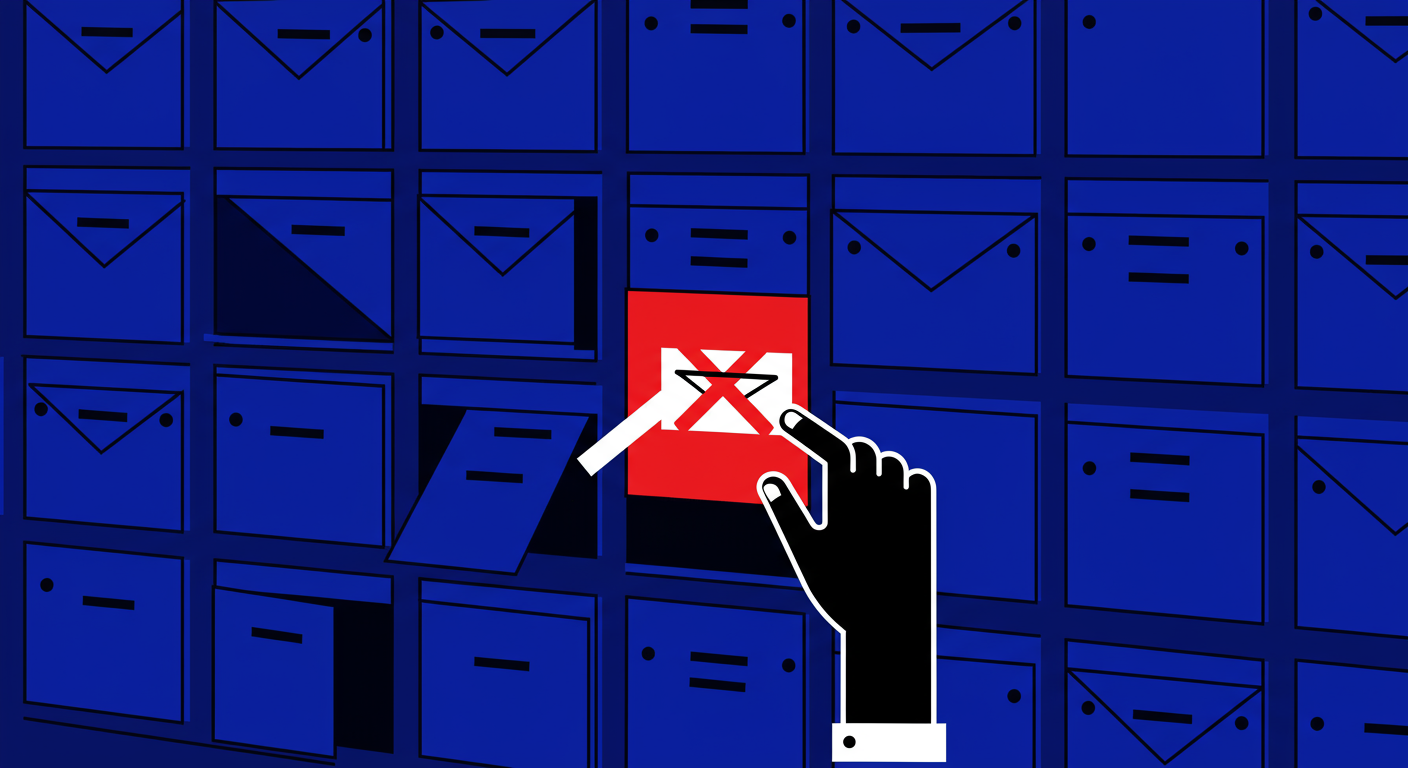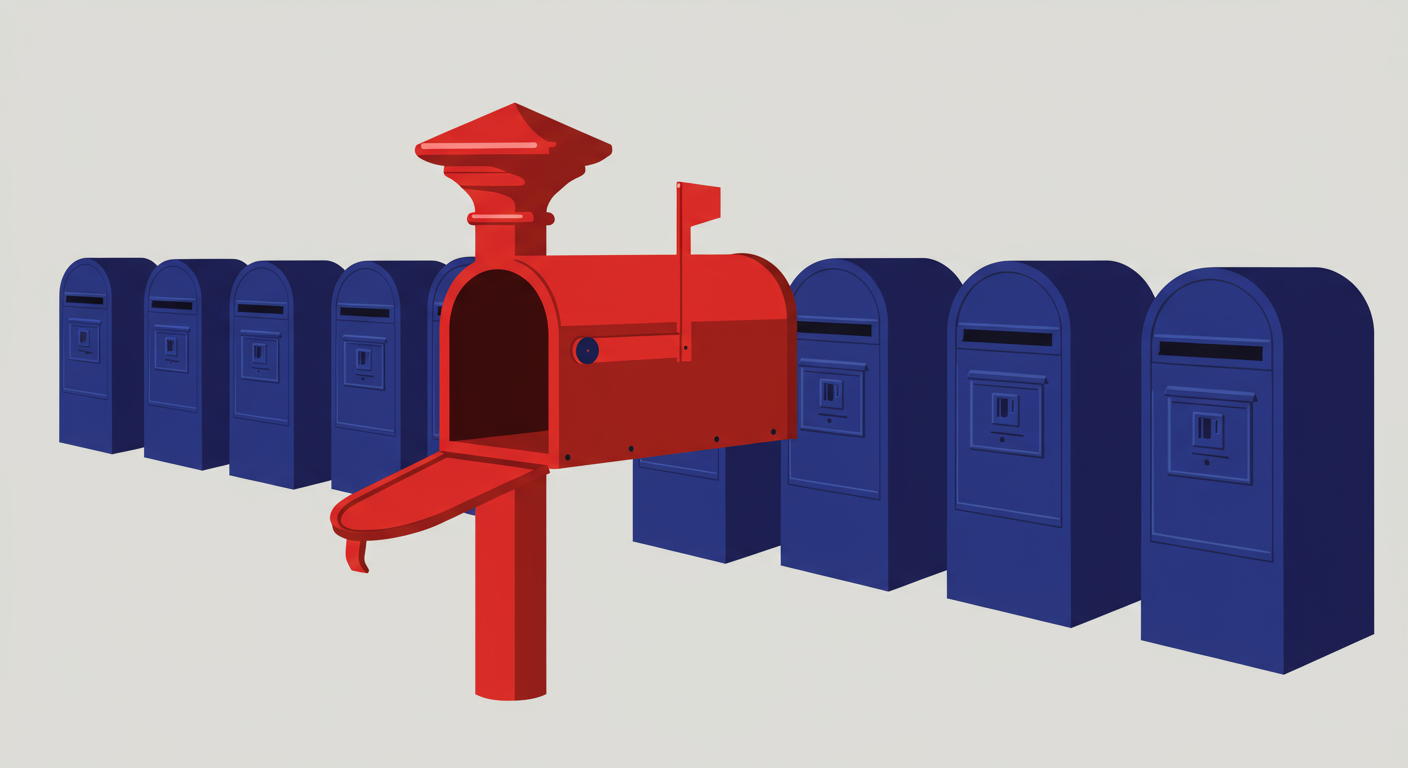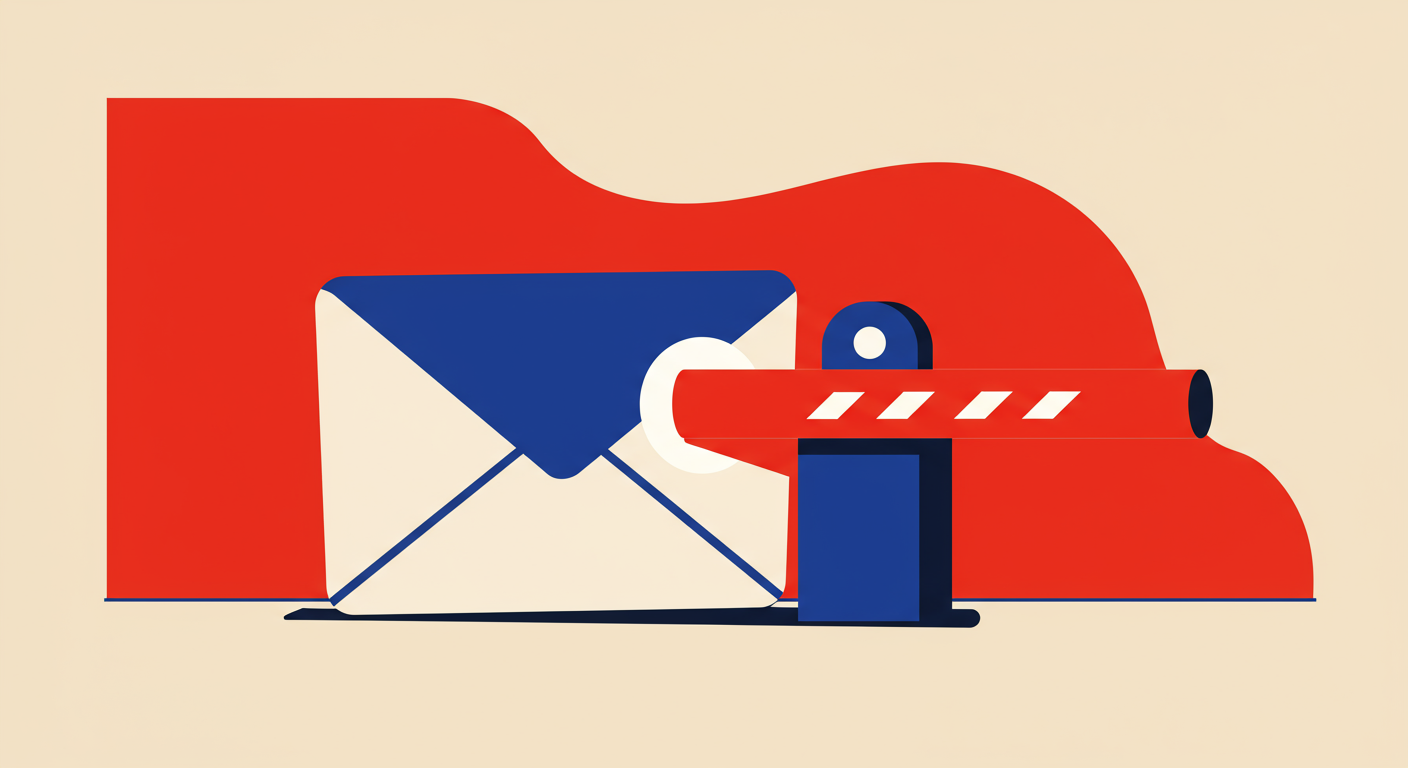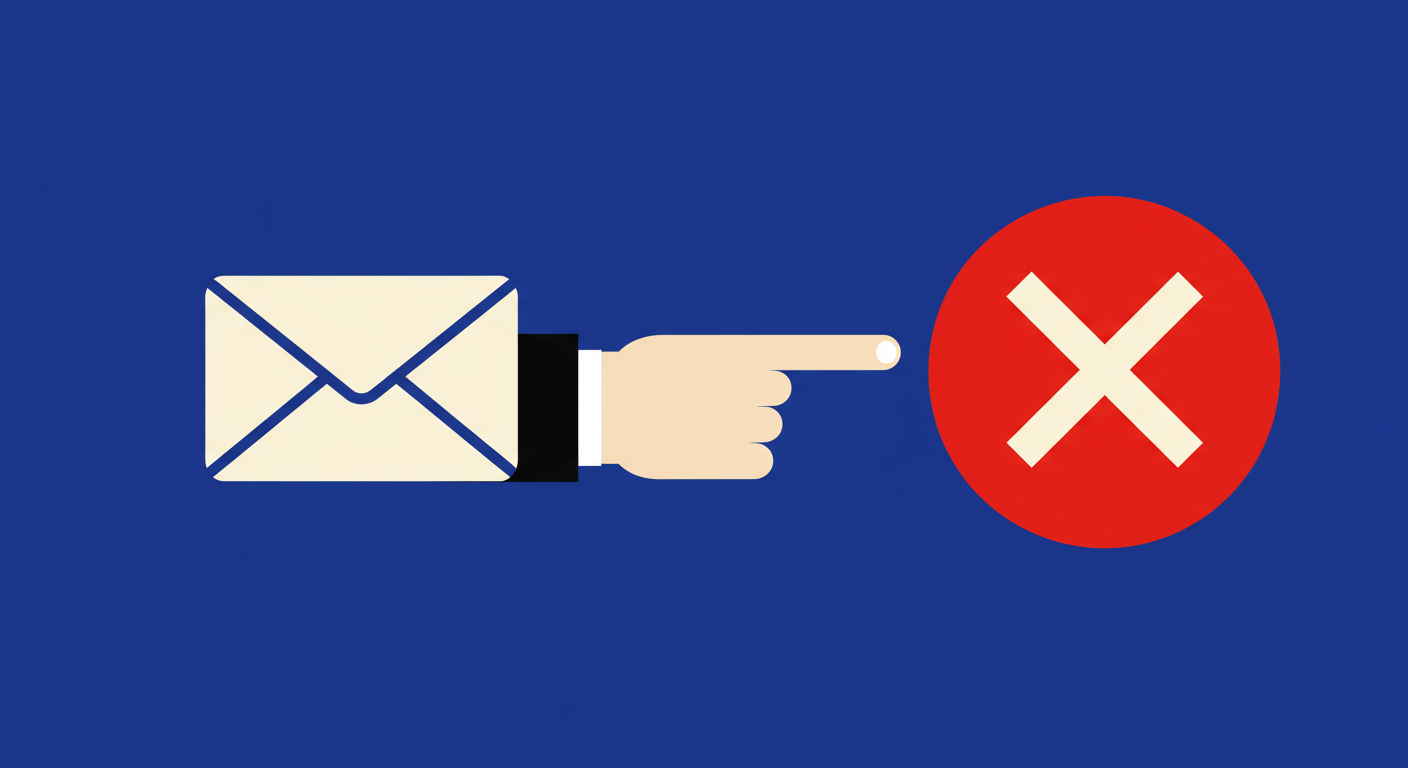A guide to the different types of email blocklists



When you send an email, you expect it to arrive in the recipient's inbox. It’s a simple expectation, but a complex journey. One of the biggest hurdles in that journey is the email blocklist. For many marketers and business owners, finding out you’re on a blacklist feels like hitting a brick wall. Your messages suddenly stop getting delivered, and it’s not always clear why or what to do about it.
An email blocklist, also commonly called a blacklist, is essentially a real-time database of IP addresses or domain names that have been flagged for suspicious sending behavior. Mailbox providers like Gmail and Outlook, as well as corporate email servers, use these lists to identify and filter out potential spam before it ever reaches the inbox. They are a critical defense mechanism for keeping email a safe and useful communication tool.
However, not all blocklists are created equal. They are operated by different organizations, target different aspects of an email, and have varying levels of impact on your deliverability. Legitimate senders can and do get listed, often by accident. The key to resolving the issue quickly, and preventing it from happening again, is to first understand what type of blocklist you’re dealing with.
Think of it this way- if your mail isn't being delivered, you need to know if the problem is with the post office, your return address, or the specific neighborhood you're sending to. Each problem requires a different solution. Let's break down the main types of email blacklists you might encounter.
The most common type of blocklist is the IP-based blocklist. Every server connected to the internet has an IP address, which acts like a physical address for a computer. When you send an email, it originates from a server with a specific IP address. An IP blocklist is simply a list of these server addresses that have been identified as sources of spam.
Getting listed on an IP blacklist can happen for a few reasons. If you use a shared IP address from your email service provider, the actions of another sender on that same IP can affect your reputation. If someone else is spamming, your emails get penalized too. A compromised server, a sudden and massive increase in your sending volume, or sending emails to spam traps (email addresses used to catch spammers) can also quickly land your IP on a blocklist.
The impact is direct and immediate. Any internet service provider (ISP) or company that subscribes to that specific blacklist will either reject your emails outright or filter them into the spam folder. Your deliverability can plummet overnight. This is why knowing your sending IP address and its reputation is a fundamental part of email marketing.
Resolving an IP-based listing usually involves first identifying and fixing the underlying cause- for example, cleaning your list or securing your server. Afterward, you can typically follow the blocklist operator’s instructions to request removal. For long-term stability, many high-volume senders opt for a dedicated IP address to have full control over their own sending reputation.

While IP blocklists focus on the 'where', domain-based blocklists (or DBLs) focus on the 'who'. These blacklists don't list IP addresses; instead, they list domain names (like yourcompany.com) that are found in spammy emails. This could be the domain in the 'From' address or domains found in links within the email body.
In many ways, a domain-based blacklisting is more serious than an IP listing. Your domain is your online brand identity. An IP address can be changed, but your domain follows you everywhere. If your domain gets a bad reputation, switching email providers won't solve the problem. The negative reputation is tied directly to your brand.
Domains are typically added to blocklists for reasons like sending emails with links to malicious websites, being associated with phishing schemes, or having a consistently poor reputation based on user complaints. The Spamhaus Domain Blocklist (DBL) is a well-known example that is widely used to filter emails containing links to untrustworthy domains.
Protecting your domain is absolutely crucial. The best defense is implementing strong email authentication protocols- SPF, DKIM, and DMARC. These technologies help prove that emails sent from your domain are legitimate and make it much harder for spammers to impersonate you, which is a common way for good domains to get blacklisted.
 Spamhaus
Spamhaus 0Spam
0Spam Cisco
Cisco NoSolicitado
NoSolicitado URIBL
URIBL abuse.ro
abuse.ro ALPHANET
ALPHANET Anonmails
Anonmails Ascams
Ascams BLOCKEDSERVERS
BLOCKEDSERVERS Calivent Networks
Calivent Networks EFnet
EFnet
 JustSpam
JustSpam Kempt.net
Kempt.net
 NordSpam
NordSpam RV-SOFT Technology
RV-SOFT Technology
 Scientific Spam
Scientific Spam Spamikaze
Spamikaze SpamRATS
SpamRATS SPFBL
SPFBL Suomispam
Suomispam System 5 Hosting
System 5 Hosting Team Cymru
Team Cymru Validity
Validity www.blocklist.de Fail2Ban-Reporting Service
www.blocklist.de Fail2Ban-Reporting Service ZapBL
ZapBL 2stepback.dk
2stepback.dk Fayntic Services
Fayntic Services ORB UK
ORB UK technoirc.org
technoirc.org TechTheft
TechTheft Spamhaus
Spamhaus 0Spam
0Spam Cisco
Cisco NoSolicitado
NoSolicitado URIBL
URIBL abuse.ro
abuse.ro ALPHANET
ALPHANET Anonmails
Anonmails Ascams
Ascams BLOCKEDSERVERS
BLOCKEDSERVERS Calivent Networks
Calivent Networks EFnet
EFnet
 JustSpam
JustSpam Kempt.net
Kempt.net
 NordSpam
NordSpam RV-SOFT Technology
RV-SOFT Technology
 Scientific Spam
Scientific Spam Spamikaze
Spamikaze SpamRATS
SpamRATS SPFBL
SPFBL Suomispam
Suomispam System 5 Hosting
System 5 Hosting Team Cymru
Team Cymru Validity
Validity www.blocklist.de Fail2Ban-Reporting Service
www.blocklist.de Fail2Ban-Reporting Service ZapBL
ZapBL 2stepback.dk
2stepback.dk Fayntic Services
Fayntic Services ORB UK
ORB UK technoirc.org
technoirc.org TechTheft
TechTheft Spamhaus
Spamhaus 0Spam
0Spam Cisco
Cisco NoSolicitado
NoSolicitado URIBL
URIBL abuse.ro
abuse.ro ALPHANET
ALPHANET Anonmails
Anonmails Ascams
Ascams BLOCKEDSERVERS
BLOCKEDSERVERS Calivent Networks
Calivent Networks EFnet
EFnet
 JustSpam
JustSpam Kempt.net
Kempt.net
 NordSpam
NordSpam RV-SOFT Technology
RV-SOFT Technology
 Scientific Spam
Scientific Spam Spamikaze
Spamikaze SpamRATS
SpamRATS SPFBL
SPFBL Suomispam
Suomispam System 5 Hosting
System 5 Hosting Team Cymru
Team Cymru Validity
Validity www.blocklist.de Fail2Ban-Reporting Service
www.blocklist.de Fail2Ban-Reporting Service ZapBL
ZapBL 2stepback.dk
2stepback.dk Fayntic Services
Fayntic Services ORB UK
ORB UK technoirc.org
technoirc.org TechTheft
TechTheft Spamhaus
Spamhaus 0Spam
0Spam Cisco
Cisco NoSolicitado
NoSolicitado URIBL
URIBL abuse.ro
abuse.ro ALPHANET
ALPHANET Anonmails
Anonmails Ascams
Ascams BLOCKEDSERVERS
BLOCKEDSERVERS Calivent Networks
Calivent Networks EFnet
EFnet
 JustSpam
JustSpam Kempt.net
Kempt.net
 NordSpam
NordSpam RV-SOFT Technology
RV-SOFT Technology
 Scientific Spam
Scientific Spam Spamikaze
Spamikaze SpamRATS
SpamRATS SPFBL
SPFBL Suomispam
Suomispam System 5 Hosting
System 5 Hosting Team Cymru
Team Cymru Validity
Validity www.blocklist.de Fail2Ban-Reporting Service
www.blocklist.de Fail2Ban-Reporting Service ZapBL
ZapBL 2stepback.dk
2stepback.dk Fayntic Services
Fayntic Services ORB UK
ORB UK technoirc.org
technoirc.org TechTheft
TechTheft Spamhaus
Spamhaus 0Spam
0Spam Cisco
Cisco NoSolicitado
NoSolicitado URIBL
URIBL abuse.ro
abuse.ro ALPHANET
ALPHANET Anonmails
Anonmails Ascams
Ascams BLOCKEDSERVERS
BLOCKEDSERVERS Calivent Networks
Calivent Networks EFnet
EFnet
 JustSpam
JustSpam Kempt.net
Kempt.net
 NordSpam
NordSpam RV-SOFT Technology
RV-SOFT Technology
 Scientific Spam
Scientific Spam Spamikaze
Spamikaze SpamRATS
SpamRATS SPFBL
SPFBL Suomispam
Suomispam System 5 Hosting
System 5 Hosting Team Cymru
Team Cymru Validity
Validity www.blocklist.de Fail2Ban-Reporting Service
www.blocklist.de Fail2Ban-Reporting Service ZapBL
ZapBL 2stepback.dk
2stepback.dk Fayntic Services
Fayntic Services ORB UK
ORB UK technoirc.org
technoirc.org TechTheft
TechTheftBeyond what is being listed (IP or domain), blocklists can also be categorized as either public or private. Public blacklists are run by specialized anti-spam organizations like Spamhaus, SpamCop, and Barracuda. Their lists are publicly available, and any mail server administrator can subscribe to them to help filter their inbound email.
The main advantage of public blocklists is their transparency. They typically provide a lookup tool where you can check if your IP or domain is listed. Furthermore, they have published criteria for why a sender might get listed and offer a clear, public process for requesting removal once the underlying issue has been resolved. While it's never fun to be on one, the path to delisting is usually straightforward.
Private blocklists, on the other hand, are a different beast entirely. These are the internal, proprietary lists maintained by large mailbox providers such as Gmail, Microsoft Outlook, and Yahoo. These lists are not public, and the providers do not share the exact criteria for what lands a sender on their internal blacklist. Their decisions are based on a vast and complex algorithm analyzing thousands of signals, from user complaints and engagement rates to authentication status.
Dealing with a private blocklist is much more challenging. You won't find your name on a public checking tool; the only symptom is a sudden and severe drop in deliverability to a single provider (for example, all your emails to Gmail start bouncing). Remediation isn't about filling out a delisting form. It's about a holistic improvement of your sending practices and building a positive reputation with that specific provider over time.

At the end of the day, all these different types of blocklists serve one primary goal: protecting email users from a flood of unwanted and potentially harmful messages. Whether it's an IP, domain, public, or private blacklist, a listing is a clear signal that your sending practices are triggering alarms somewhere.
Instead of viewing a blocklisting as a penalty, I encourage senders to see it as a diagnostic tool. It's valuable, if sometimes painful, feedback. It tells you that something in your email program- whether it's your list acquisition methods, your content, or your list hygiene- needs immediate attention. Ignoring it will only lead to more severe and long-lasting deliverability problems.
The best strategy is always a proactive one. To stay off these lists and maintain a healthy sender reputation, focus on the fundamentals:
By understanding the different kinds of blocklists and focusing on responsible sending practices, you can navigate the complexities of email deliverability with confidence. This not only keeps you off blacklists but also builds trust with your audience and ensures your valuable messages reach the inbox, which is the ultimate goal for us all.












